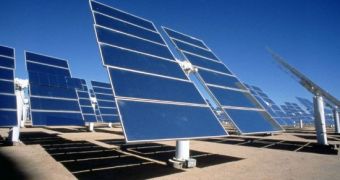Getting solar panels to behave like plants and turn around so as to follow sunlight is something engineers have been struggling to achieve for quite some time now. Naturally, the end goal is that of boosting the energy production of existing PV installations.
Whereas most of the researchers who looked into this issue worked towards adding rotating motors or other similar options to ground-based PV installations, the engineers working with QBotix decided to approach the matter at hand from a somewhat different perspective, and add a robot into this green-oriented equation.
Looking back, the idea behind their newly developed technology is rather simple: why have rotating motors installed for every PV installation that is part and parcel of a solar farm, when one could get a robot to do the work of adjusting solar panels in such ways that this renewable energy source is harvested with maximum efficiency?
Apparently, this solution to tracking down sun movements also makes significantly more sense from a financial standpoint, as one such robots costs significantly less than other technologies that can only deal with one PV installation throughout the course of an entire day.
As Green Tech Media explains, this rail-mounted robot spends all of its time visiting each assembly of the solar farm under its jurisdiction, makes sure the angles and tilts are well adjusted, and then proceeds to rest for a few minutes, until the time comes to once again go out on patrol.
One very good piece of news is that these robots are designed and manufactured in such ways that harsh environmental conditions (i.e. water, dust, extreme temperature) do not impede them from doing their job, so one need not worry about potential glitches or related maintenance costs.
Presently, these robots are being tested at a solar farm in California, and it is expected that they could soon become available on the market, provided that various investors agree to finance their being manufactured on a large scale.
Down below you have a video in which the engineers who worked on this project are explaining both their ideas and their work to members of the press.

 14 DAY TRIAL //
14 DAY TRIAL // 